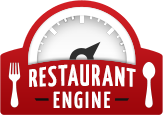How to Define Your Exact Target Restaurant Customer

Knowing your target customer makes business decisions much easier.
The most successful restaurants know their exact target restaurant customer. It’s one of the first rules in marketing – identify a consumer with a specific need, and shape your product around it. Follow these basic steps to define your ideal target customer…
1. Research your area’s demographics
Start by doing some research on your local community. Most cities will post their most recent census information online.
Try to limit your research to the immediate area. For downtown areas it would be within a few miles radius, while more suburban areas have a wider target radius.
Start the process with these questions:
- Is the area mainly residential or business oriented?
- Is it densely populated or more remote?
- What are the dominant professions and lifestyles?
- What’s the dominant age group?
- What’s the most popular form of transport?
- Average income of surrounding residents?
- What type of development is happening in the next year?
- Is there a lunch/dinner rush from nearby offices?
Some info will surprise you with its usefulness. I read recently that about half of Manhattan residents live in single-person households. This type of demographic can have an important effect on your restaurant’s target market.
When you have some key demographic info, start researching trends in those consumer groups. Is there an influx of single, young professionals in the neighbourhood? Find out how this group decides where to eat.
A quick search for the word ‘restaurant’ on the Pew Research website will help you learn more about consumer groups.
2. Research the competition
Now that you know what types of consumers are in the area, find out how your competition is relating to them. Visit a few of your direct competitors and take notes on what’s working and what isn’t.
Is there a particular group or need that the competitors aren’t catering to? Are there many retired couples in your neighborhood, but not enough higher-end romantic dining spots? Is there a certain age or income group that isn’t being addressed?
This may take a simple look through your local business directory. You might also ask some reliable friends what they feel is lacking in your area.
Define a group where your restaurant is capable of adjusting slightly to fill their needs. This will help you differentiate your target customer from the competition’s.
The key for any business is differentiation. Customers need a reason to choose you. (tweet this)
3. Research existing customers

Does your restaurant cater to businesspeople, families or singles?
If your restaurant is already in operation, start observing your own customers. Begin with a limited timeframe of one or two weeks. You might just be on a casual lookout, or assign someone to formally record customer data. Whatever method you choose, make sure it’s discrete so you don’t create an awkward vibe.
Take note of how people interact with your restaurant. Do younger clientele tend to come in later? How long do they stay and what are the most popular dishes? Are reservations more important to older customers?
If you have a strong online presence, you may also find it useful to do some extra research there. Offer customers a discount or free drink for filling out a quick survey. Survey Monkey is a great service for this purpose.
4. Create target customer profiles
When you can visualize the basic target market, create two specific customer profiles. Label them as your ‘primary’ and ‘secondary’ customers.
Describe each person’s demographic identity, like age, income, basic spending habits and daily routine.
Don’t just stop at surface qualities. Add psychographic factors like the motivation to spend, as well as deeper goals and emotional characteristics. Really imagine what makes your target customer want to eat at your restaurant. Go beyond simple logic like price or quality of service.
This pushes you to really visualize the exact type of person you’re targeting. You’ll notice details that are lost in more vague, standard target marketing techniques.
Exact customer profiles are also a great tool when creating your marketing plan. (tweet this)
5. Evaluate and revise
Never just decide on one target customer and end there. The world around your restaurant is always changing, and so will your ideal customer.
Continue to do research at least once every year. Find out the new trends in your area. Look out for changes like gentrification or a new transit route. Keep track of the competition. These changing factors can have a clear effect on your target customer.
Be ready to adjust your primary and secondary customer profiles and stay flexible.
These five steps can get you started in defining an exact target market.
Have any tips to add? Leave a reply with your own techniques below!
Photos by Freshtightdesigns.com and InfoTech Marketing


Oh. That’s perfect. It helps to attract customers in a restaurant. راهبند اتوماتیک–کرکره برقی–لامپ کم مصرف–درب ضد سرقت